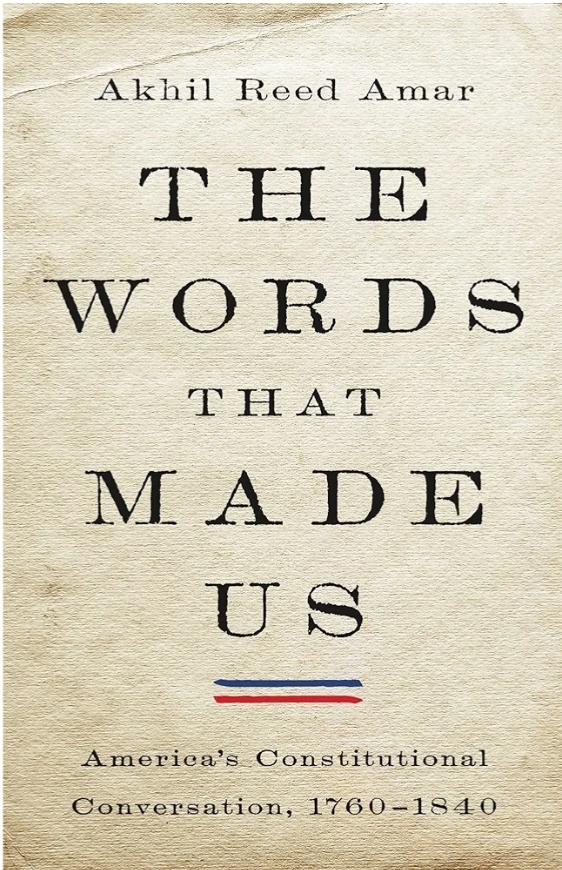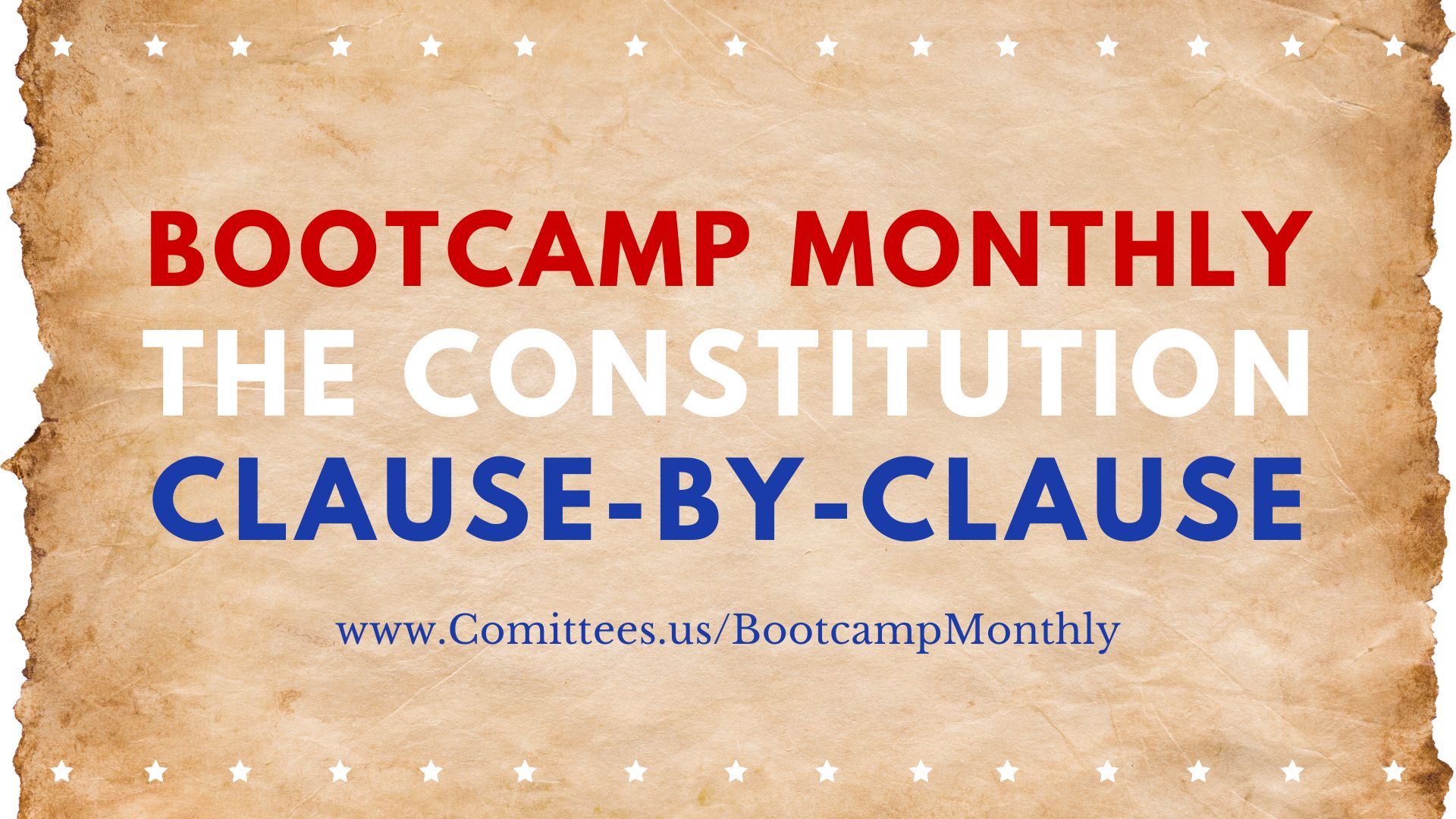Akhil Reed Amar’s “The Words That Made Us: America’s Constitutional Conversation, 1760-1840” is an ambitious and comprehensive exploration of the political and intellectual debates that shaped the formation of the United States Constitution and the early years of the republic. Amar, a renowned constitutional scholar, traces the “constitutional conversation” of the American people from the onset of the revolutionary period through the early decades of the 19th century, offering insights into how key figures and common citizens contributed to the building of the American constitutional order.
Here’s a detailed overview of the book’s key elements:
1. Central Thesis:
Amar argues that the United States Constitution was not the work of a few elite framers but rather the product of an extended, nationwide dialogue that took place over several decades. He calls this dialogue the “constitutional conversation,” emphasizing the collective input of diverse voices, including ordinary Americans, in shaping the nation’s foundational laws and principles. Amar seeks to place the American people at the center of this story, showing how the Constitution was influenced by the wider public discourse.
2. Timeline and Scope:
The book spans the crucial period from 1760 to 1840, beginning just before the American Revolution and extending to the era following Andrew Jackson’s presidency. This timeline allows Amar to trace how the ideas about government, liberty, and the rule of law evolved in America over time. By extending the conversation to 1840, he covers not only the drafting and ratification of the Constitution but also the debates over its interpretation and application during the early republic.
3. Key Events and Themes:
Amar examines several key moments in American history that were pivotal to the development of the Constitution and American identity, including:
- The American Revolution (1760–1776): Amar explores how the political conflicts between the American colonies and the British crown over taxation and governance laid the groundwork for constitutional thinking. This includes a deep dive into the role of pamphlets, speeches, and letters in shaping revolutionary thought.
- The Articles of Confederation (1777–1787): Amar discusses the strengths and weaknesses of America’s first national constitution and how its failures led to calls for a more robust federal government.
- The Constitutional Convention (1787): Amar provides a detailed account of the debates that took place during the drafting of the U.S. Constitution. He highlights the roles of major figures like James Madison, Alexander Hamilton, and George Washington, but he also focuses on how these debates were reported and discussed in the wider public.
- The Ratification Debates (1787–1789): The battle over ratifying the Constitution is a key focus. Amar examines how the Federalists and Anti-Federalists engaged in a spirited debate over the merits and dangers of the new Constitution, with the Federalist Papers and Anti-Federalist writings playing a central role in the national conversation.
- The Bill of Rights (1791): Amar explains how the Bill of Rights was a response to concerns raised during the ratification debates, addressing fears of centralized power and safeguarding individual liberties.
- Early Constitutional Challenges (1790s–1810s): The book discusses how the Constitution was tested in its early years by events like the Whiskey Rebellion, the Alien and Sedition Acts, and the debates over federalism. These events helped shape interpretations of the Constitution and set precedents for future governance.
- The Rise of Jacksonian Democracy (1820s–1840s): Amar explores how Andrew Jackson’s presidency and the expansion of democracy in America during this period reshaped the constitutional conversation, with greater participation by ordinary citizens and a growing sense of American populism.
4. Constitution as a Living Document:
One of Amar’s central arguments is that the Constitution is a living document, continuously shaped by public dialogue and debate. He challenges the notion that the framers’ original intent should be the only lens through which to interpret the Constitution. Instead, he suggests that the Constitution has always been subject to reinterpretation and evolution, reflecting the changing values and needs of American society.
Amar stresses that the American people have played an essential role in this process, whether through formal amendments, judicial interpretations, or popular movements. He underscores how the conversation surrounding the Constitution did not end with its ratification but continued through the early republic and remains ongoing today.
5. Role of Key Figures:
While Amar places great emphasis on the collective nature of the constitutional conversation, he also highlights the contributions of several key figures:
- George Washington: As the first president and the presiding officer of the Constitutional Convention, Washington is portrayed as a unifying figure whose leadership helped bridge the gaps between different factions.
- James Madison: Madison is credited with shaping the intellectual framework of the Constitution, particularly with regard to the balance of powers and the need for a strong federal government. Amar discusses Madison’s role in both the drafting of the Constitution and the Bill of Rights.
- Alexander Hamilton: Hamilton’s vision of a strong national government and his efforts to promote the Constitution through the Federalist Papers are examined in detail. Amar also discusses Hamilton’s contributions as the first Secretary of the Treasury in shaping early American economic policy.
- Thomas Jefferson: Amar delves into Jefferson’s views on states’ rights, individual liberties, and his opposition to some of Hamilton’s federalist policies, which contributed to the first major political divide in American history.
- John Marshall: As Chief Justice of the Supreme Court, Marshall’s decisions in cases like Marbury v. Madison and McCulloch v. Maryland are shown to have had a profound impact on the interpretation of the Constitution and the balance of power between the federal and state governments.
6. The People’s Role:
A key strength of Amar’s work is his focus on how ordinary citizens engaged in the constitutional conversation. He highlights the importance of public meetings, newspapers, pamphlets, and speeches in shaping public opinion and influencing political leaders. Amar also discusses the role of marginalized groups, such as women and African Americans, in this conversation, though he acknowledges that these voices were often suppressed in the formal political sphere.
7. Interpretive Approach:
Amar’s writing is deeply historical but also interpretive. He weaves together legal analysis with historical context to show how constitutional principles evolved in response to political, social, and economic challenges. He frequently engages with the broader scholarship on constitutional law, offering both original insights and critiques of other historians and legal scholars.
8. Conclusion:
“The Words That Made Us” provides a rich and detailed narrative of how the U.S. Constitution was shaped by an ongoing dialogue among politicians, intellectuals, and ordinary Americans. Amar’s central thesis is that the Constitution was not just a document written by a few men in 1787 but a living framework continuously shaped by the ideas, debates, and participation of the American people. By emphasizing the collective nature of this constitutional conversation, Amar challenges the notion of a static Constitution and encourages readers to view it as a dynamic, evolving document.
In Summary:
Akhil Reed Amar’s “The Words That Made Us” is a masterful exploration of the political and intellectual conversations that shaped the U.S. Constitution from the Revolution through the early republic. The book offers a compelling argument that the Constitution is the product of a wide-ranging and ongoing public dialogue, with contributions from a diverse array of voices. Amar presents a rich historical narrative, bringing to life the debates that helped shape America’s founding and constitutional development, and he encourages readers to see the Constitution as a living document, continuously shaped by the people it governs.







